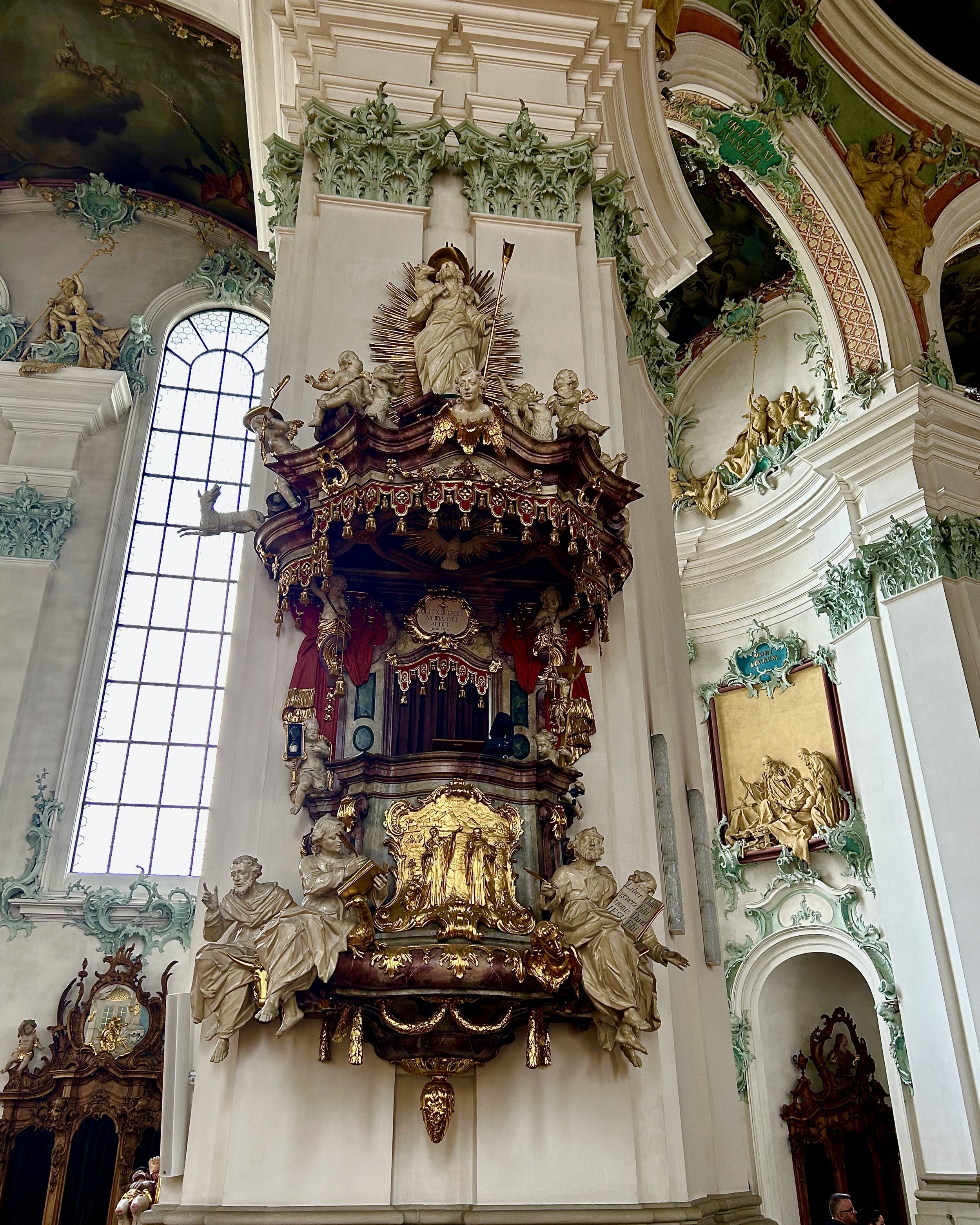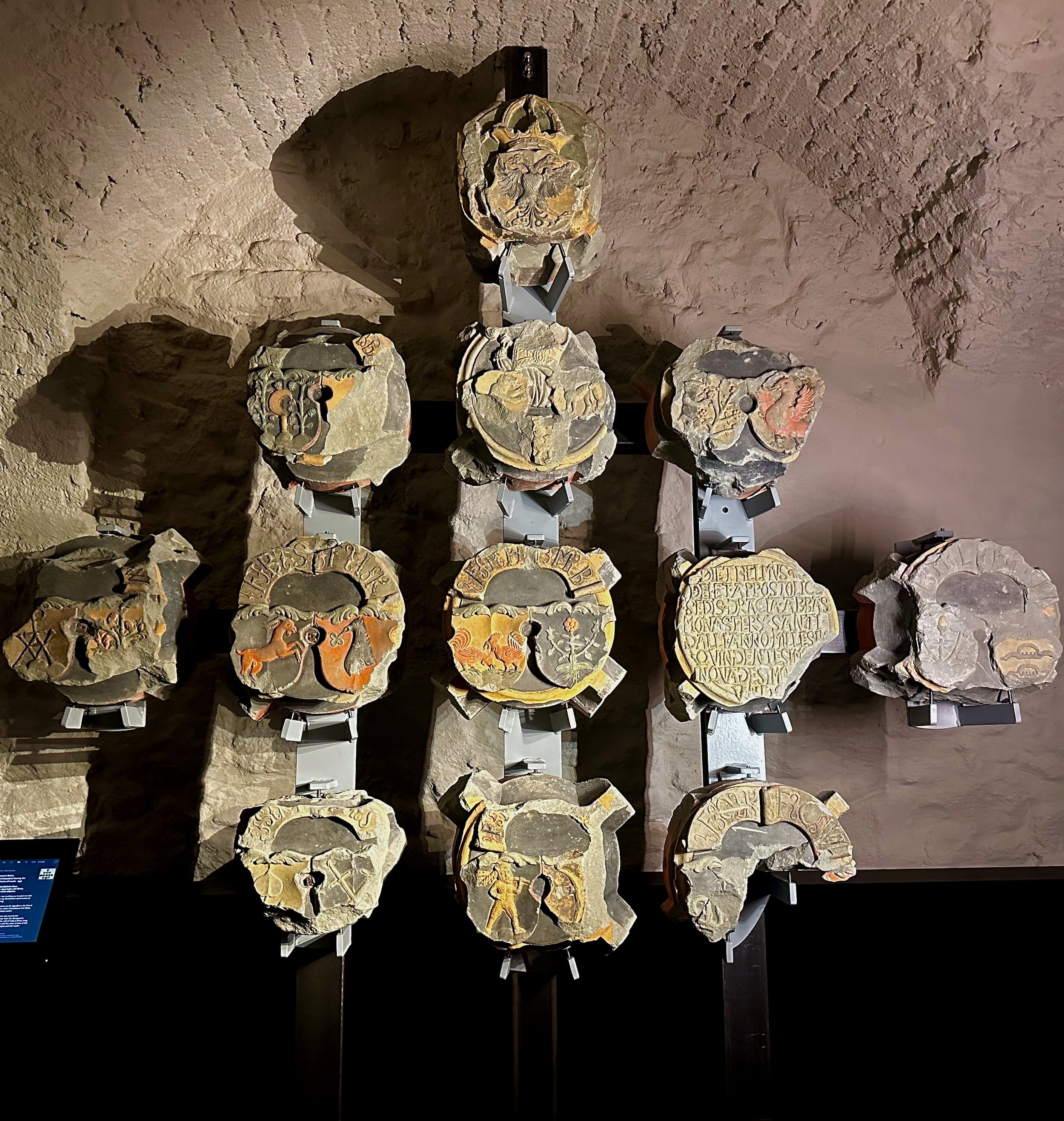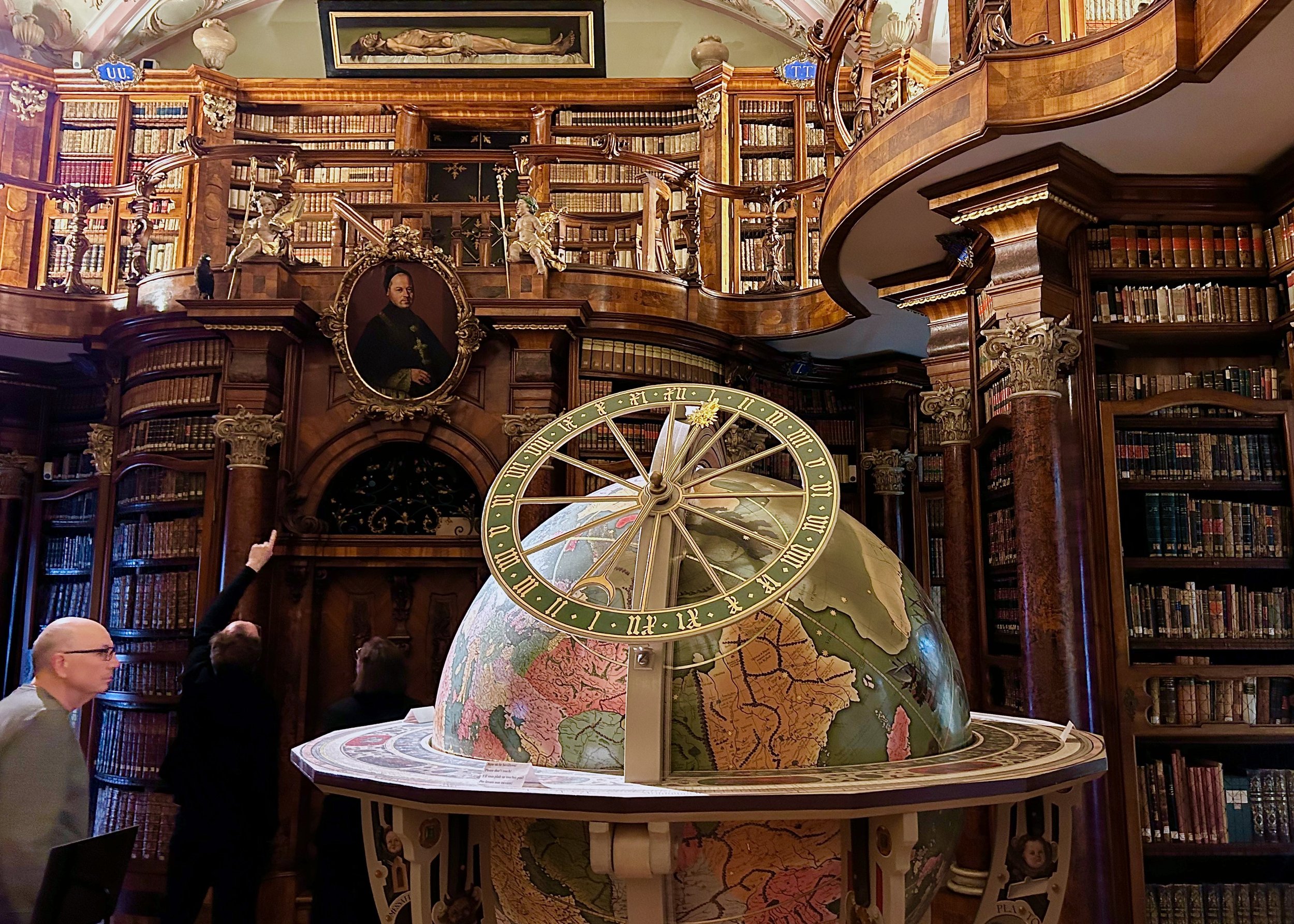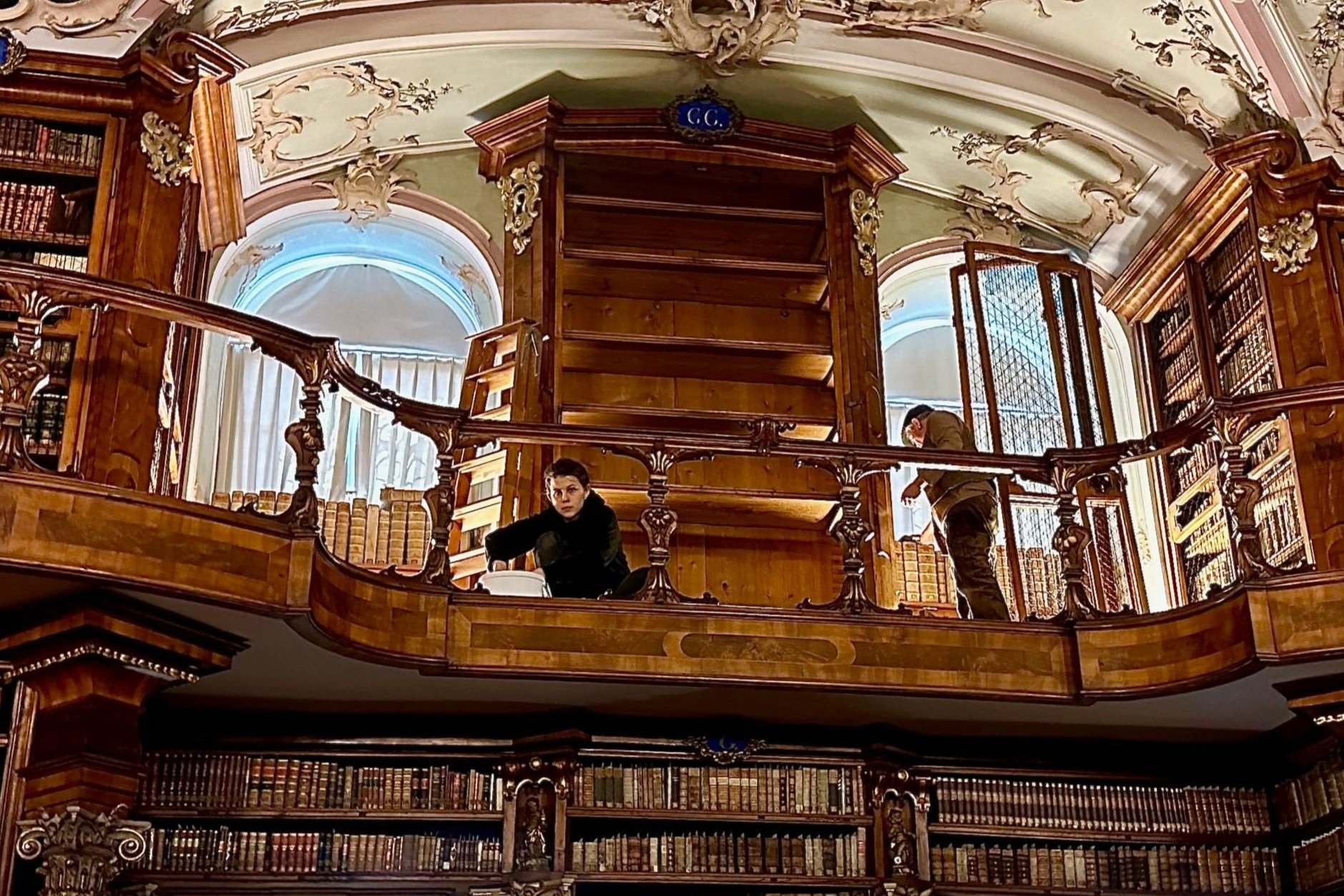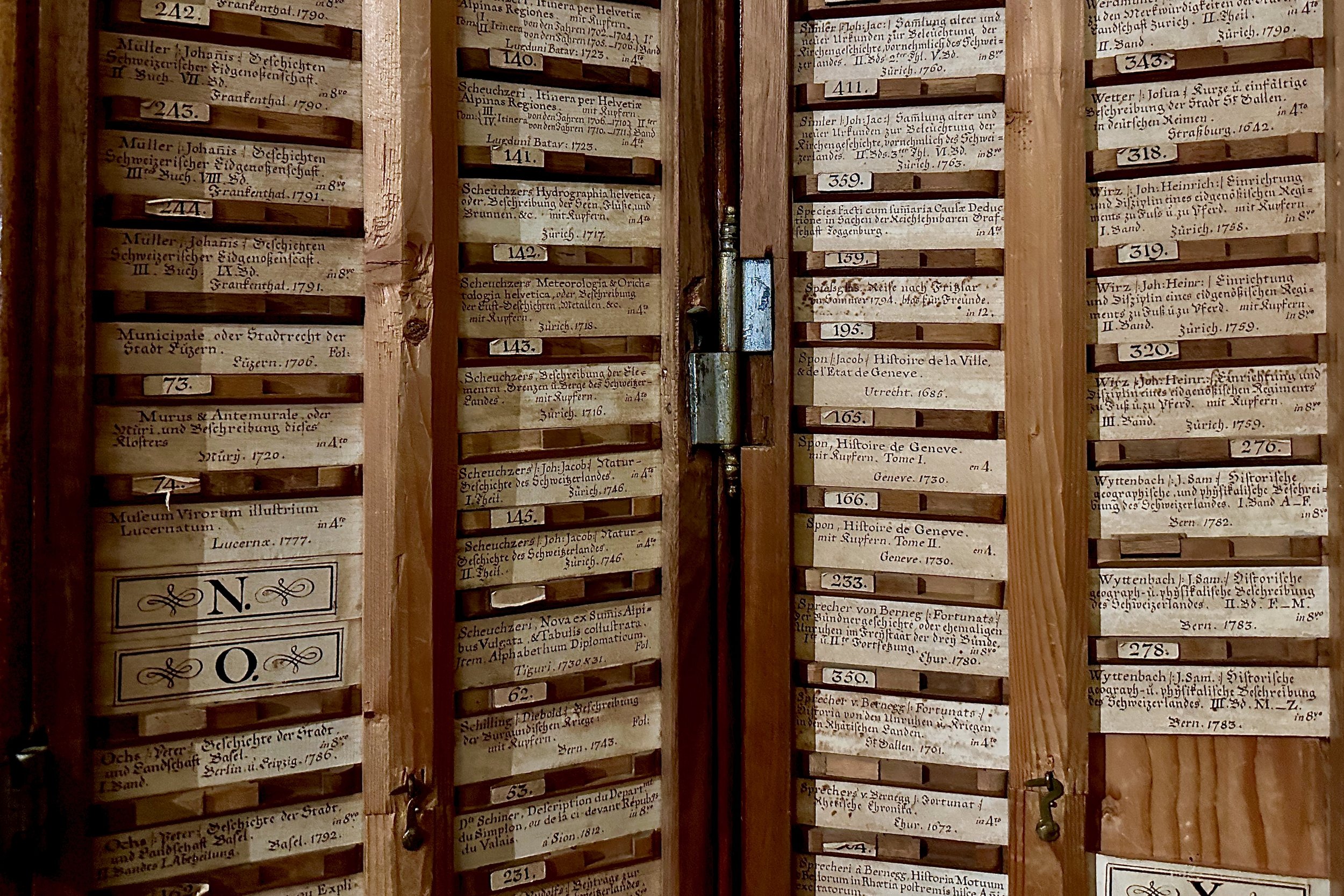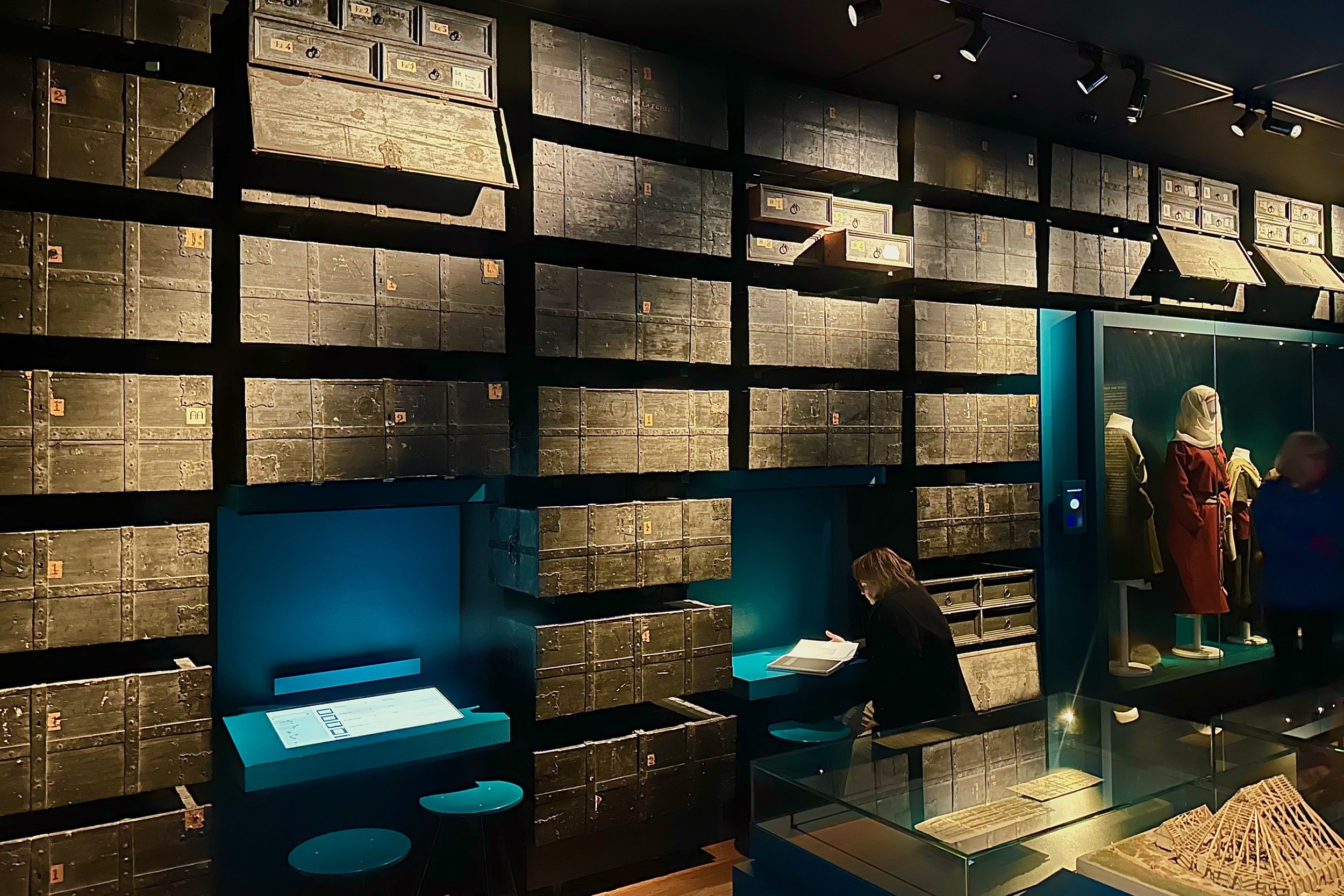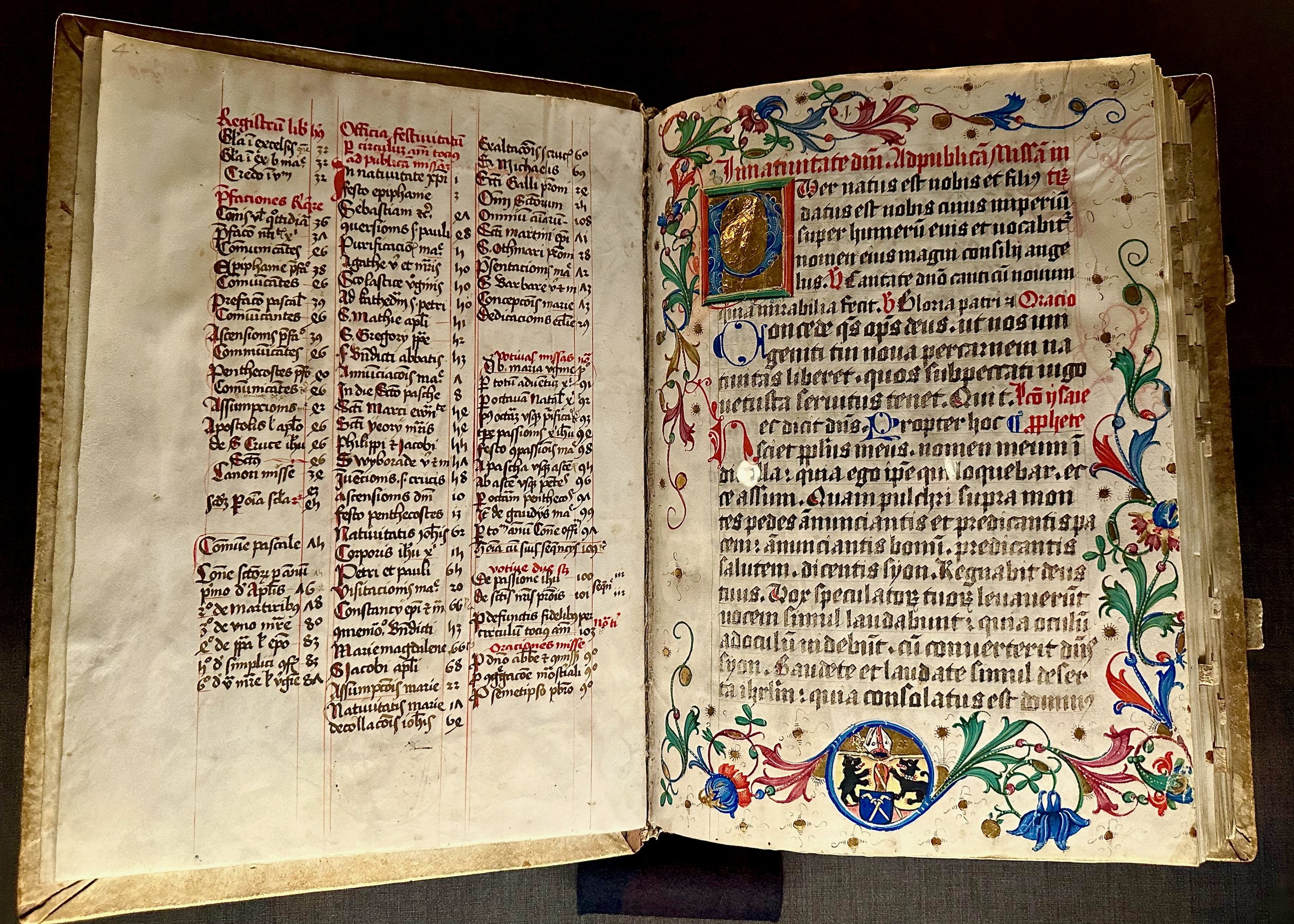#8 - St. Gallen Abbey Library: one of the oldest libraries in the world
By Karen Date
No matter how much you plan for a trip like this, real joy comes from meeting someone who lives in the place you are visiting and recommends that you see something you didn’t know about. That’s exactly what happened when we ran into Christine at the Kebab Shop in Arbon, Switzerland (see previous post). When we told her we didn’t have the rest of the trip all mapped out yet, she got excited while telling us all the places we should go in Switzerland. One of her “hot tips” was the Library of St. Gallen in the nearby city of the same name just a few miles south of where we were on yesterday’s final day of biking.
Karen walking near the Abbey in St. Gallen
The Cathedral is the center of the Abbey complex. The Late-Baroque style is stunning in its colorful, ornate details. It was built over a 12-year period, completed in 1767.
After visiting the St. Gall Abbey, we headed to the library, which has the distinction of being the 3rd oldest library in the world! The St. Gallen Abbey Library began in the Middle Ages, on the site of the monastary community founded in 612 by St. Gall, a hermit monk from Ireland.
A concise description of the history of of the Abbey and the Library from the Weltkulturerbe Stiftsbezirk Museum website.
After trying on all these slippers, Karen finally found a pair that were suitable. (To keep bacteria out of the library, everyone has to wear felt booties.)
The library has 30,000 books and manuscripts on display and another 140,000 in storage. This all start over a thousand years ago with the monks collecting and preserving these religious and secular documents of the written word back to the Middle Ages. It took one guy a YEAR to just make the labels for what is on display!
Also, they have one of the first world globes ever made . . . so old that North America is incomplete and Australia/New Zealand hadn’t been discovered yet! (This one is actually a duplicate. In 1712, Swiss forces raided the Abbey, stole many manuscripts as well as the famous globe, which now resides in the Landesmuseum in Zurich.)
in 1954, twelve keystones from the Renaissance library were found in the wall of today’s library wing. They bear an inscription and the coats of arms of the abbot and monks, the Empire, and the master craftsman. These keystones date to the year 1553.
This space delights the eye from floor to ceiling.
Steve is trying to find Minneapolis on the big globe. This globe is actually a copy of the original which was stolen by Zürich soldiers in the 1700’s and now resides in the Landesmuseum in Zürich.
Workers are re-staining some of the shelves on the upper level.
Every book in the library has a hand-written label. One man spent an entire year labeling all the books!
Remo was a great source of information . . . the large manuscript behind him is made from the skin of 250 cows!
The collection currently encompasses 2100 hand-written manuscripts (half of which are from the middle ages), 1650 incunabula (prints up to 1500), early prints (printed 1501 to 1520) and around 170,000 printed books.
In 1983, the Abbey complex and library were designated as a UNESCO World Cultural Heritage Site.
We had no knowledge of this place and no plans to come here, but the chance encounter with Christine in the Kabob Shop in Arbon piqued our interest and reminded us why we enjoyed talking with local people when we travel.
This unique place, where religion and science cohabitate, is one of the most significant discoveries we’ve made in our travels. It makes you wonder about how many other awe-inspiring places there are that we don’t know about.
We would love to come back to this place some day.

